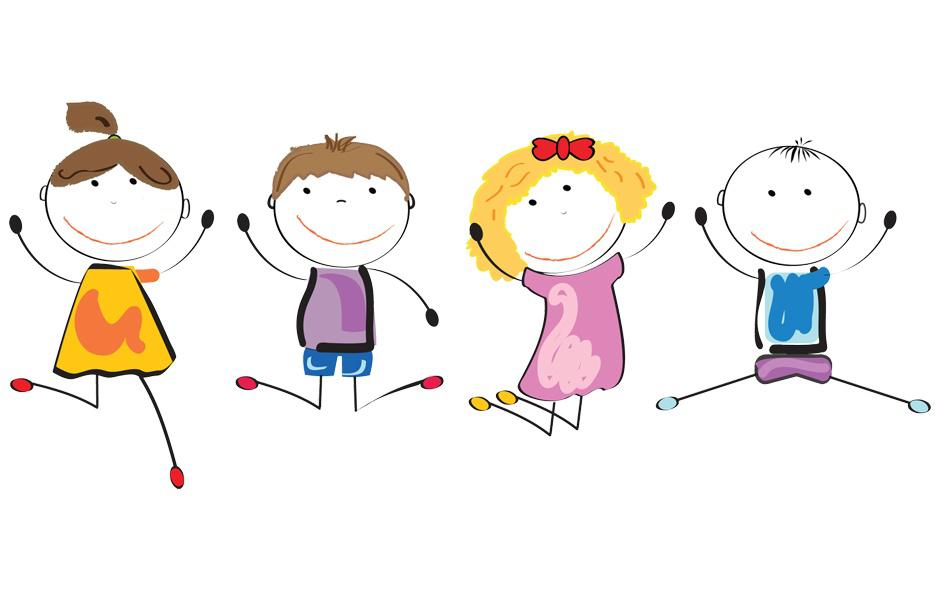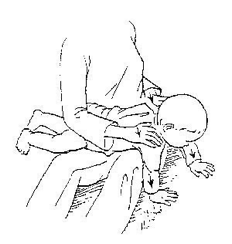
Proprioceptive input is my most commonly used sensory input during therapy. It can be used with a diverse population of children to calm, alert and help with focus. It is usually a sensory system that is not often understood.
What is proprioception?
Proprioception is the sense that tells the body where it is in space. It’s very important to the brain, as it plays a large role in self- regulation, co-ordination, posture, body awareness, the ability to focus and speech. Proprioception is the sense that lets us know where our different body parts are, how they move and how much strength our muscles need to use. The child who is looking up while climbing up the rungs of a ladder, and the child who is riding his bicycle on the track maneuvering through his friends are both employing the proprioceptive system. A child with physical limitations who is guided through daily passive movements of their muscles and joints, by their parent or therapist is gaining greater body awareness, and will therefore be able to motor plan more efficiently.
The role of the proprioceptive system in self-regulation
When receptors, known as proprioceptors, are stimulated, the arousal centre of the brain is provided with information about our movements and body position. Within this system, there are three major components of the brain which interact and impact a child’s level of alertness (the cortex, limbic system and cerebellum). A child’s level of alertness will impact their ability to sustain participation and attention in activities. Therefore, by providing children with proprioceptive input throughout the day they can be assisted to maintain an optimal state for learning and focused attention.
Proprioceptive input is an effective therapy tool used for children with sensory processing needs. It can improve focus and help to calm a child when it is used in the correct way.
How will I know if my child will benefit from proprioceptive input?
Generally, your child will benefit from proprioceptive input if they fall into two categories.
Sensory Seekers: These are children who are often craving more sensory/proprioceptive input and it appears that they cannot get enough of the sensation.
They may present as:
- Constantly moving around, jumping, crashing into furniture, people
- Stomping feet while walking
- Kicking into objects when seated e.g., chair while sitting at the table at school
- Enjoy bear hugs
- Uses excessive force with objects e.g. When playing with toys
- May chew on items excessively
- Often overstep personal boundaries
- May be seen as playing rough or wild
- Fidgety and excitable
Your child may additionally present with low registration or an under responsive for proprioceptive input. The following are some of the signs for low registration:
- Not aware of surroundings, and bump into surrounding objects
- Present as having low energy
- Getting up in the morning may be a struggle
- Appear to daydream in the classroom and miss out on relevant information
- Miss their chair when sitting down or fall off the chair
- Uninterested and withdrawn
How to get started:
It is important to remember that many activities can provide proprioceptive input to your child, however there may be some that your child does not prefer. Bear hugs offer great proprioceptive input and are very calming, however if your child presents with tactile(skin) sensitivities, then this may not be appropriate. Jumping on a trampoline may also offer proprioceptive input, but if a child is allowed to jump for too long, then this input may result in the child becoming disorganized and out of control.
It is important to structure the activity. Jumping on the trampoline could be adapted to remain as jumping on the trampoline but only for the duration of their favourite song, so that there remains an end point.
How much input and when to provide it?
Proprioceptive input is always as much or as little as each individual child needs. It is recommended that you develop a plan with your Occupational Therapist to make this input become a part of your child’s daily life. This is known as a sensory diet. It is overwhelming to think of a diet in general, but sensory diets can be life changing and will make every day routine activities manageable for a child with sensory needs.
Examples would be:
- A child who is presenting with challenges sitting sit at school is given time before school to jump on the trampoline for 5 minutes. Her school is in the community so she rides her bike to school every morning and has a stretchy band around her chair in the classroom so that she can kick it when she feels the need to move and is unable to.
- Children may carry a stress ball in their pocket or school bag that they can squeeze it whenever they need to. They also carry crunchy snacks for every break which help them stay alert and focused during lesson
- A child who struggles to remain alert and focused during lessons may require alerting proprioceptive input with a trampoline break for 5 minutes between lessons, or a quick errand carrying a few books to the teacher upstairs, will help with keeping the child alert.
- A child with complex physical challenges who displays many involuntary movements, can be provided with proprioceptive input through their muscles and joints for sensory regulation. This can be in the form of a weighted lap pad, weighted cuffs and can help the child to remain calm and focused when presented with a task
What input to provide?
Proprioceptive input can be varied depending on which activity your child enjoys. You can be guided by your occupational therapist and look for changes in your child’s attention levels following proprioceptive input.
Examples of Proprioceptive Activities include:
- Jumping – on a trampoline
- Creating a crash pad with bean bags and pillows so your child can jump from a low padded cushion onto a large foam mattress
- Running – Make sure that there is a goal/target
- Climbing – jungle gym, Monkey bars, climbing a rope up an incline/wall
- Stomping – incorporating animal walks or a fun marching song
- Wheelbarrow walks
- Chewing (crunch food such as pretzels, raw vegetables or chewy food such as dried fruit)
- Drinking through a straw (thicker consistencies are recommended)
- Squeezing playdough and putty
- Bouncing your child on a gym ball (You can provide extra physical support by holding your child around the trunk and hips while facilitating bouncing)
- Allowing your child to sit on a trampoline, while giving them the physical support they need by supporting their trunk and hips to facilitate bouncing
- Passive weight bearing. This can be done by placing your child over a gym ball or your body and allowing them to weight bear through their upper limb. Passive weight bearing can also be facilitated through side sitting, making sure the elbow is extended and then leaning gently to each side (see picture below)


You can incorporate ‘heavy work’ proprioceptive input into everyday chores by allowing your child to:
- Carry the laundry basket
- Dig in the garden
- Rake up leaves
- Assist with setting the table/packing the dishwasher
- Pull or push heavy objects such as the grocery cart, vacuum cleaner
Deep Pressure activities
These activities also provide a lot of tactile input so if your child is sensitive to this then this may not be a good strategy to use. This input is often calming and is provided by a parent, teacher, caregiver or by an object. Some of the examples below can be used for children with more complex physical needs as the input can be applied passively.
Examples are:
- Big hugs
- Rolling your child in a blanket like a burrito**
- Weighted blanket**
- Steam roll over your child with a gym ball
- Weighted Vests**
- Massages
- Joint compressions (as demonstrated by your OT)
- Vibrating Noodle
- Weighted Lap Pads**
**Weighted vests, lap pads and blankets should be used under the direct care and administration of your occupational therapist
Sources:
Sensory Integration. An Approach to Occupational Therapy Intervention. Renee Waitling, Sandra Shefkind. www.aota.org
Focus on sensory craving. Brit Collins, Lucy Jane Miller, June 2010 www.spdstar.org
Sensory Integration Theory and Practice (Second Edition) Anita C Bundy, Shelly J Lane, Elizabeth A Murray
Sensory Integration and the Child – Dr Jean Ayres





